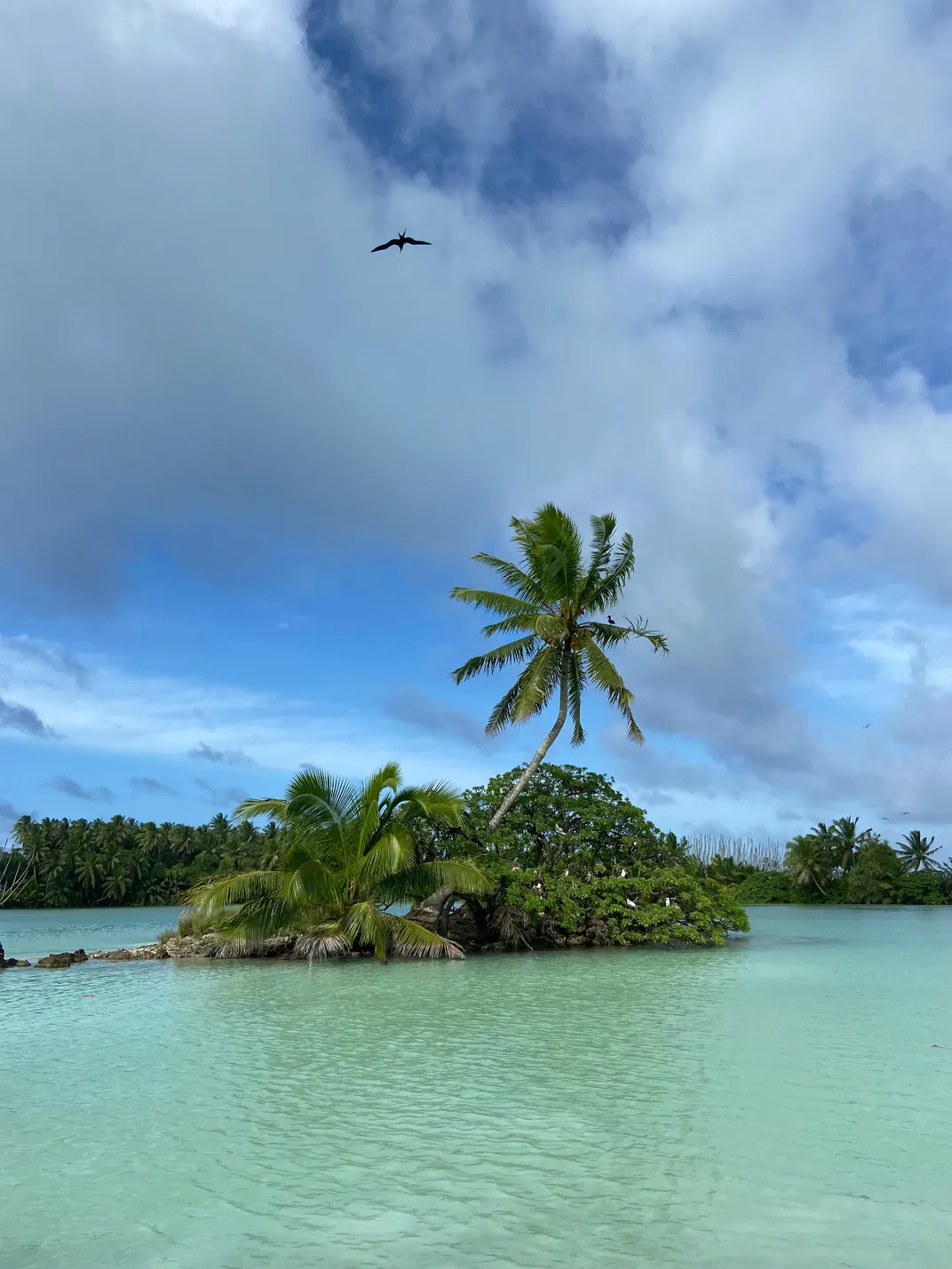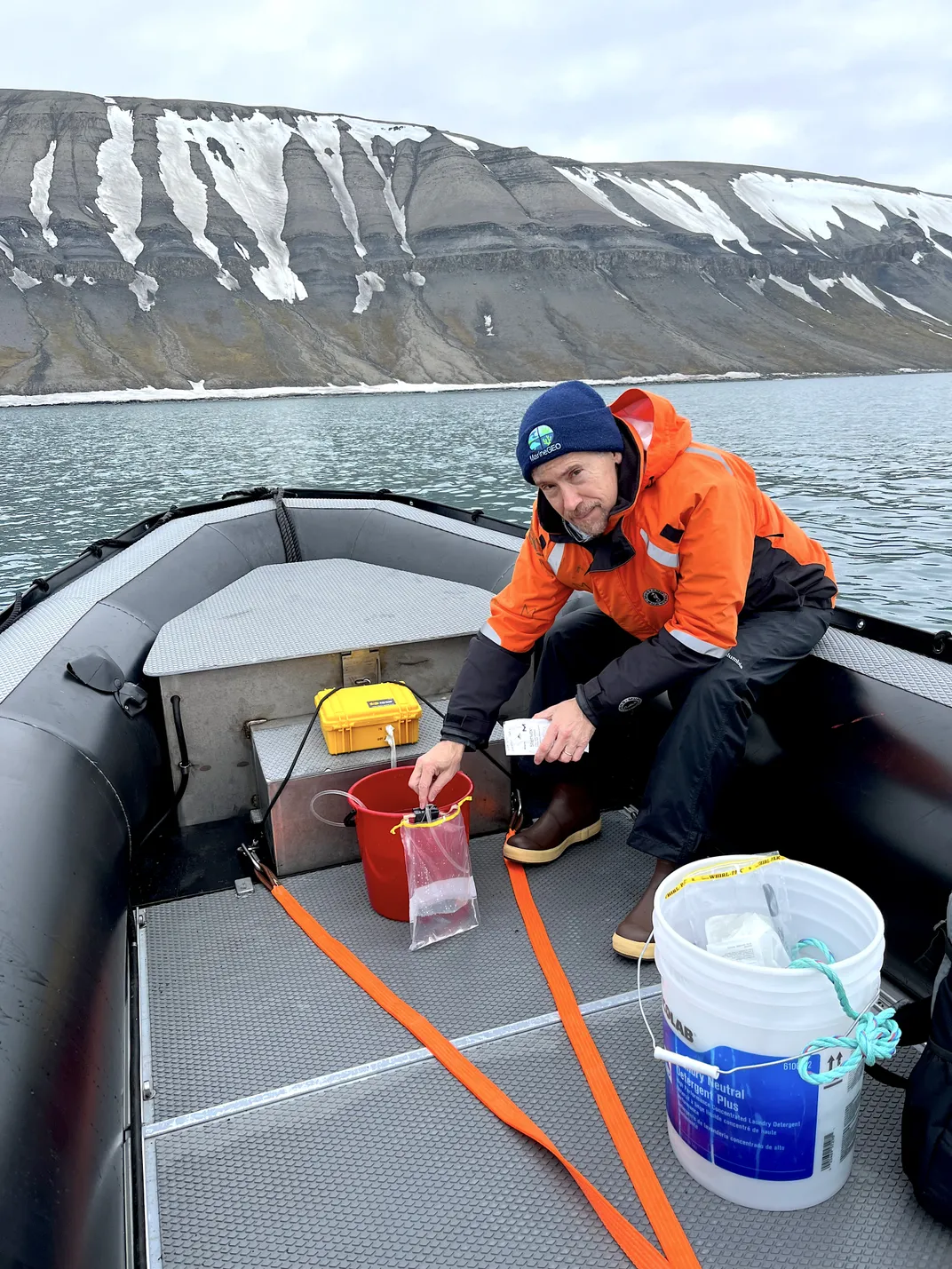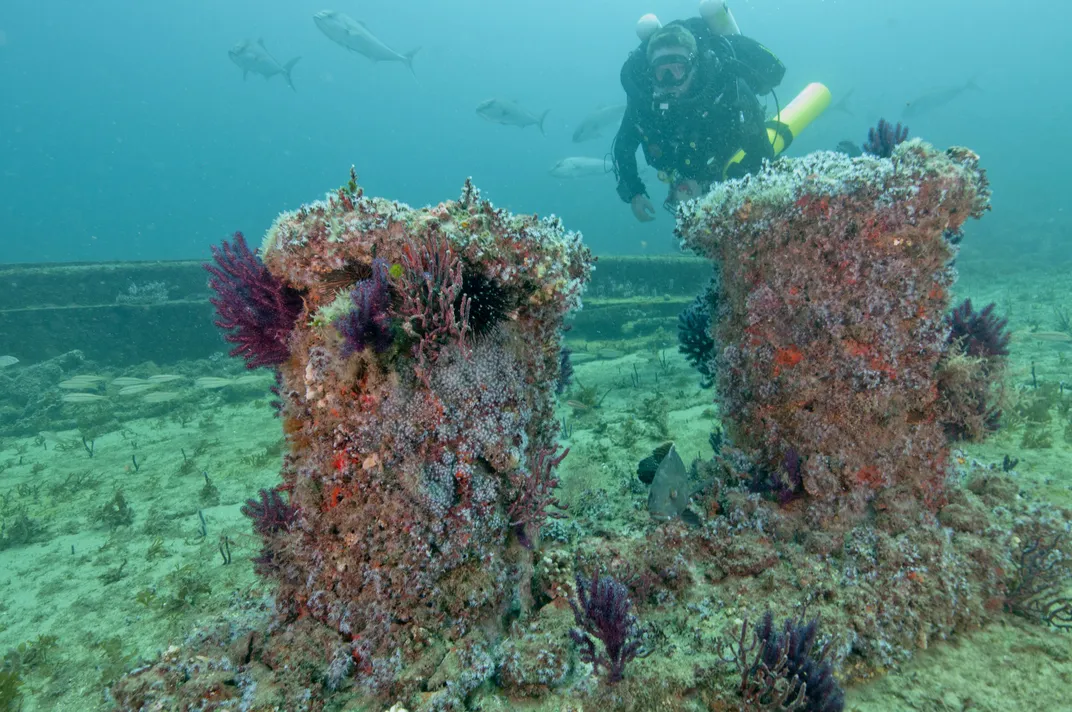SMITHSONIAN ENVIRONMENTAL RESEARCH CENTER
U.S. Needs to Diversify Marine Protected Areas to Reap Full Benefits
Almost all the marine protected areas in the U.S. sit in the central Pacific Ocean, while fragile ecosystems in other regions are being left out
:focal(850x559:851x560)/https://tf-cmsv2-smithsonianmag-media.s3.amazonaws.com/filer_public/6c/67/6c675390-f6fd-4d02-9110-b88d422372cc/staghorn_coral_on_baker_island_nwr_5123996348.jpg)
In 2021, President Biden launched the America the Beautiful initiative, which included an ambitious “30 by 30 initiative.” The 30 by 30 initiative aims to conserve at least 30% of U.S. land and waters by 2030, to help reverse the negative trend in climate change. This plan puts a great deal of focus on marine protected areas (MPAs)—spaces that are protected by the local, state or federal governments, so both people and nature can benefit from their ecosystems.
However, the United States hasn’t been investing as much in other diverse ecosystems as it has in the central Pacific Ocean. According to a new research paper in Frontiers in Marine Science, roughly 96% of the marine protected areas in the U.S. sit in the central Pacific. Outside that region, less than 2% of U.S. ocean waters have any protection at all, and the few bodies that do are usually “minimally” or “lightly" protected.

"The U.S. has more than 1700 MPAs of one sort or another,” said paper author Emmett Duffy, head of the Marine Biodiversity Lab at the Smithsonian Environmental Research Center. “But most are quite small and many have very little protection.” Because of the little protection those MPAs have, their species and ecosystems are still vulnerable.
Furthermore, the differences between minimally and fully protected MPAs are immense.
“Minimally protected MPAs have activities happening in them that have high impacts on biodiversity—for example, large-scale infrastructure,” said Jenna Sullivan-Stack, lead author and research associate at Oregon State University. Fishing still occurs in those MPAs, and when fishers use impactful gears at large scale, they can cause further damage to the ecosystems. Unfortunately, this is true for most of the U.S. MPAs outside of the central Pacific, which means current protections aren’t sufficient to prevent damage.
The Price of Weaker Protections
If the United States doesn't improve its system of MPAs to be more diverse, more protective, and include more water bodies across the United States and territories, the authors said there is a chance we will lose important benefits from several ecosystems in the unprotected areas, and leave them more vulnerable than ever. The ecosystems most at risk include the Caribbean Sea, the Arctic and Atlantic Oceans.
Losses in these ecosystems could snowball into loss of benefits for their nearby communities. These include the dwindling of larger fishes and more species and habitats at risk in these marine ecosystems.

On the flipside, increasing the number and strength of MPAs will benefit the world by preserving ecosystems and biodiversity, which helps with climate resilience. And it will also help with communities’ food security as fishes will get bigger and more plentiful. Protecting certain areas from fishing may not harm the fishing industry, the authors said; in fact, it could benefit them.
“Paradoxically, many MPAs can actually benefit fisheries as fish that grow up within their protection are exported (‘spill over’) to outside areas where they can be caught by fishers,” Duffy explained.
What happens if the U.S. doesn’t improve its protections?
“We lose out on the benefits they can provide—for biodiversity but also climate resilience and social benefits, including equitable access to nature,” Sullivan-Stack said. Therefore, without improving protection of MPAs, the world will suffer worse consequences from climate change, and some communities will lose access to nature.
However, historically some vital local stakeholders—including indigenous and fishing communities—have been excluded from discussions of MPAs despite marine resources being central to their livelihoods and cultures.
Native Americans have generations of knowledge and wisdom that would be helpful to MPAs and protection of nature in general. “Unfortunately, indigenous people have often been left out of conversations about conservation and management policy and implementation,” Duffy said.
“Local fishing communities also have important insights to contribute, and including them can lead to improved MPA design and increased buy-in," said Matthew Ogburn, the head of SERC’s Fisheries Conservation Lab, who was not an author on the paper.

Charting A Brighter Course
The paper highlighted several suggestions for how the United States could improve its management and creation of MPAs, in addition to creating more MPAs with biodiversity in mind.
First, the nation could improve its commitments to all current and future MPAs. Some have already been damaged by human actions like overfishing, despite the protection of the various authorities that range from the local to the federal level.
Second, the United States could create a network of MPAs, enabling authorities to communicate with each other and reinforce the MPAs in need of extra protection. The best way to accomplish this is by building upon already-existing programs, which would save both money and time while boosting the care of MPAs.
Third, the United States could reexamine its existing MPAs, to ensure that their protection will yield the greatest benefits. The U.S. needs to ensure that MPAs do deliver benefits, which is the primary reason for their protection in the first place. This way, managers can redirect resources to the places that need them most.
However, none of those suggestions will achieve as much as the United States expanding its MPAs, to include more and larger water areas outside the central Pacific Ocean. If the United States doesn’t do this, then many communities beyond the Pacific coast will miss out on MPAs' immense benefits.
Ecologists at the Smithsonian Environmental Research Center (SERC) have also been conducting research that contributes to MPAs outside the Pacific, most notably in the Chesapeake Bay. Ogburn gave a few examples from the SERC's Fisheries Conservation Lab: They have tracked blue crab female spawning migrations to help develop the Chesapeake Bay Blue Crab Spawning Sanctuary. They’re also evaluating whether oyster sanctuaries in the Chesapeake Bay are functioning properly.
Yet, SERC recognizes that their actions aren’t enough, not without the help of other organizations and communities—including indigenous ones.
“The knowledge and wisdom they hold are incredibly important for charting a path forward for managing our U.S. oceans,” Sullivan-Stack said. Without their help, the U.S. wouldn’t have managed to achieve even this much protection of MPAs. However, as Duffy points out, Native Americans haven't always been invited to the discussions. The Indigenous leaders, local stakeholders and other stewards of marine resources all need a place at the table to achieve equitable protection for MPAs and conserve nature.
It’s a fact that some communities have more access to MPAs than others, such as coastal cities. This is also an important factor in determining which areas need to be protected more than others.
“I’ve learned from my social scientist and other colleagues, such as Dr. Ana Spalding and Angelo Villagomez, among others, how important it is to take into account the who and the how of MPAs, not just the what and where,” said Sullivan-Stack. “And this not only is important for social outcomes of MPAs, but for ecological outcomes as well. MPAs just don't work if you don't pay attention to the people.”
The full research paper is available on the Frontiers of Ecology website at https://www.frontiersin.org/articles/10.3389/fmars.2022.849927/full. A summary is available on Oregon State University’s website.
